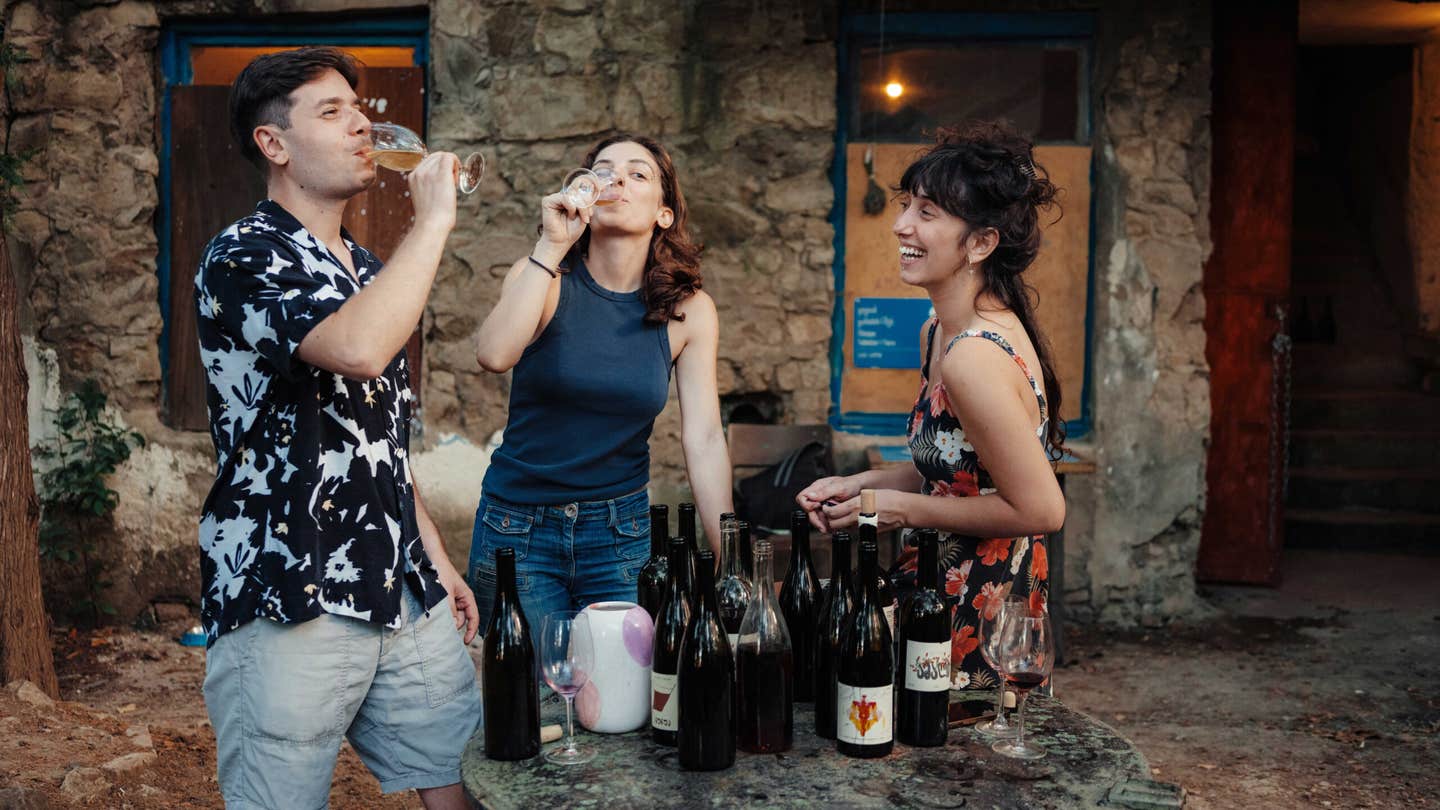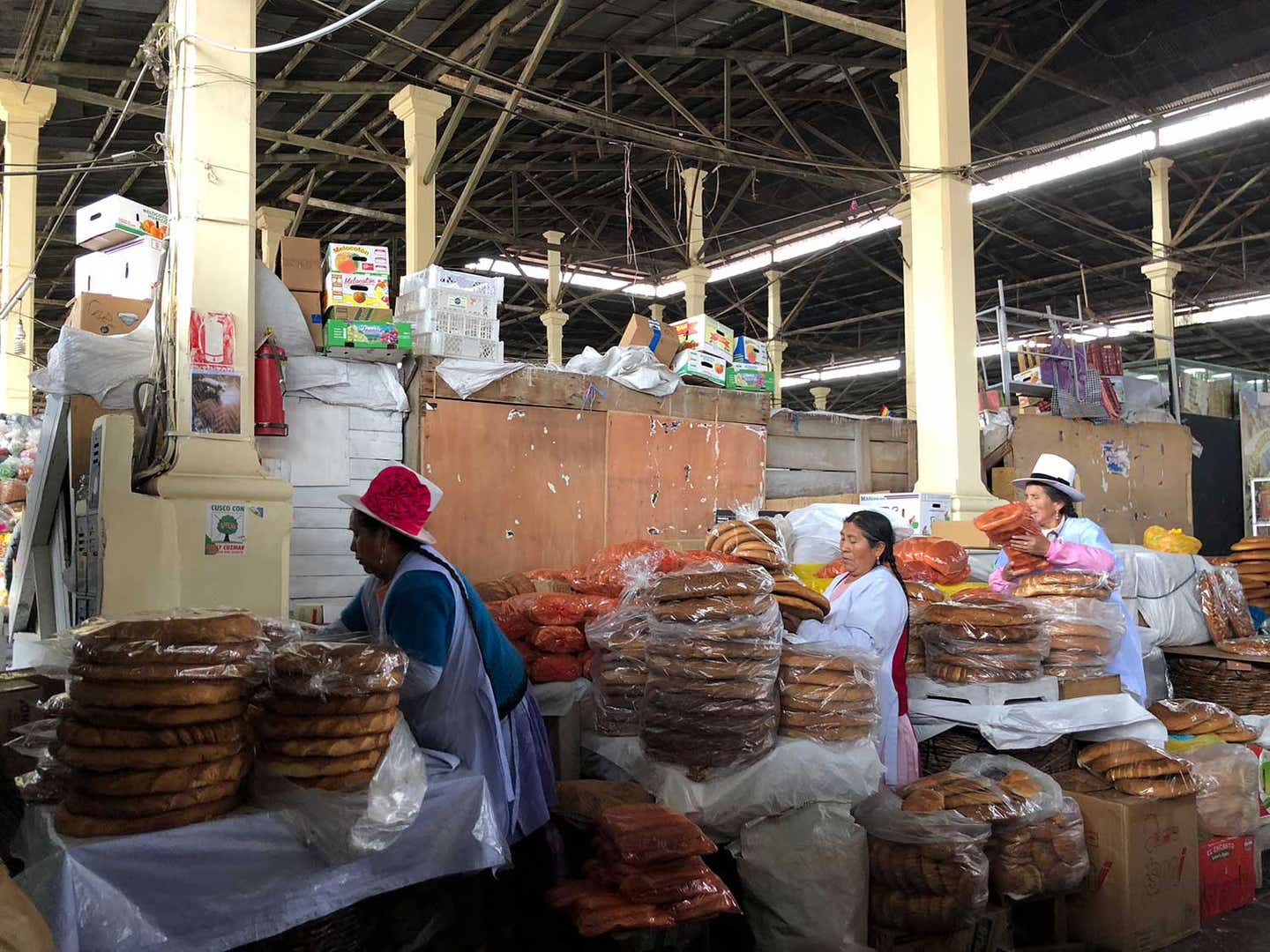
The Peruvian Town is Obsessed With Their Sweet Bread Loaves
In Oropesa, a eucalyptus-scented loaf of pan chuta adorns the central plaza, the church altars, and almost every other facet of daily life
Winding my way out of Cusco at 2 a.m. on a Sunday—past the club-hopping crews in the Plaza de Armas and the undulating silhouettes along a nearby lover’s lane—I had no idea that the scene I was headed for was exponentially crazier. My destination? Oropesa, a small town about 15 miles to the southeast, where the bakers who turn out the region’s most iconic bread were about to clock in for the day.
Here in the "National Bread Capital," so designated for its absurdly fertile alluvial soil, you've got to get up pretty early in the morning if you're going to compete in the pan chuta space: Breakfast is one of the most popular times to tear into these spongy, subtly sweet mega-rounds, even the daintiest of which are a foot in diameter (the jumbos, generally reserved for religious holidays and altar offerings, span 20 inches). Though the oven-to-mouth version is best—because you're still practically taking hits of the oven's eucalyptus smoke off the soft, brown crust at that point—locals also eat pan chuta throughout the day, whether with butter, marmalade, cream or nothing at all.
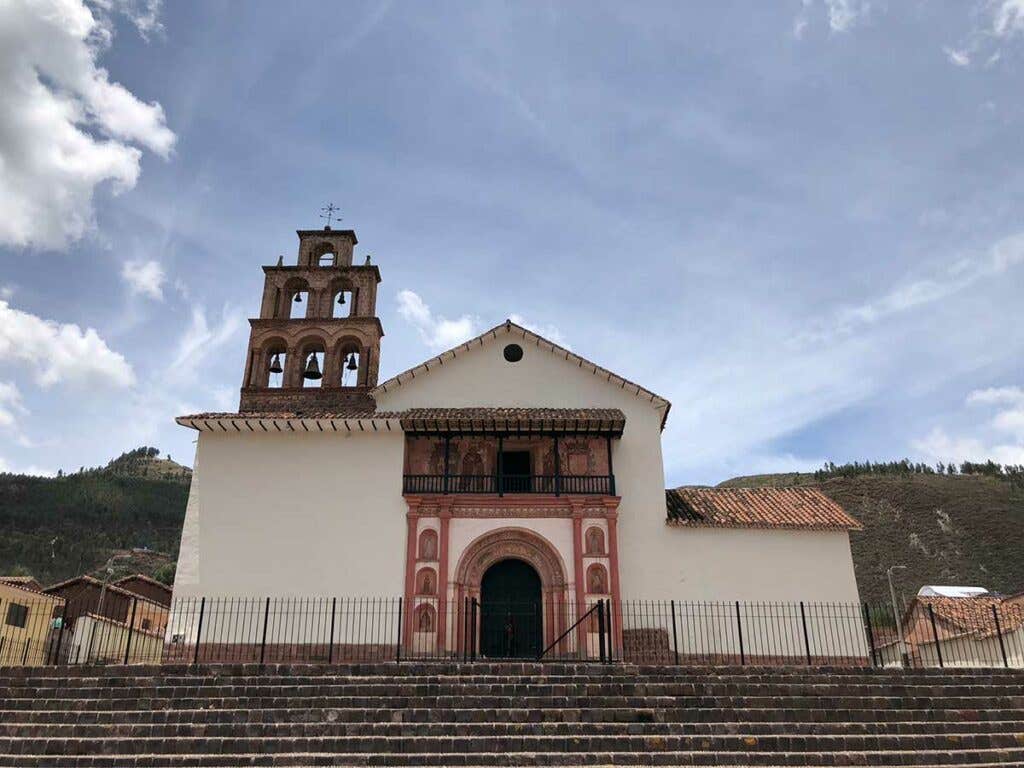
The Oropesa bread ladies dominate an entire aisle of Cusco’s Mercado San Pedro in their lavishly pleated jewel-toned skirts and impossibly tall white hats. But even in plain clothes, an Oropesina at market is easy to spot: She’s the one doing a brisk business behind a pile of outsized, disc-like loaves. And, after more than a decade of writing about Peru, I’m the one who’s often in line for them.
Still, for someone who’d eaten her weight many times over in pan chuta, I knew shockingly little about the staple—a deficiency I hoped to change during my last trip to Peru, when I heard that some of Oropesa’s old-school, family-run ovens were increasingly open to visitors. A few emails and phone calls later, I had a date with Modesta Castelo Farfán, owner and grande dame of T’anta Wasi (House of Bread in Quechua), and an award-winning baker known for consistently stellar pan chuta. (She’s even nabbed the cover of Amasando Exito, a magazine published by the region’s chief shortening supplier.)
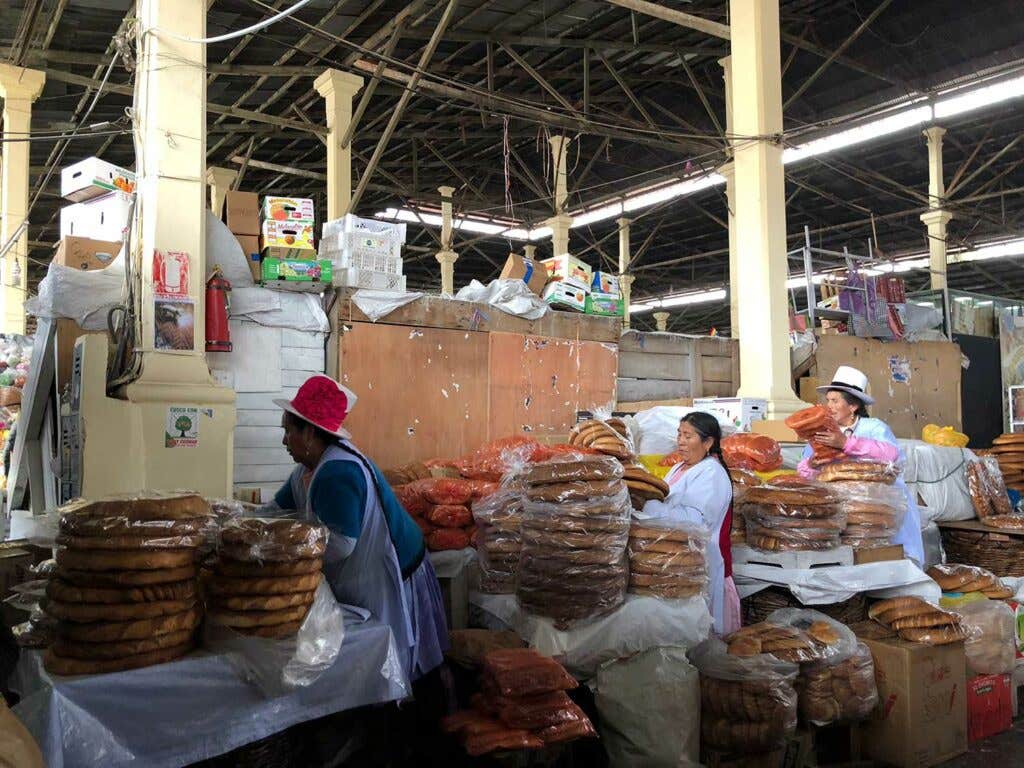
After a half-hour drive down a two-lane highway that wound past tiny farming enclaves—none visible in the inky darkness of my middle-of-the-night drive, but some detectable in the rainy season’s pregnant air—I rolled up to her compound just before 3 a.m. I was hardly the first to arrive. The “maestro”—a 20-something bakery foreman named Delfin—was already on hand to tend to the first batch of dough and fire up the domed adobe oven, a scene that was unfolding in panaderia after panaderia for blocks in either direction.
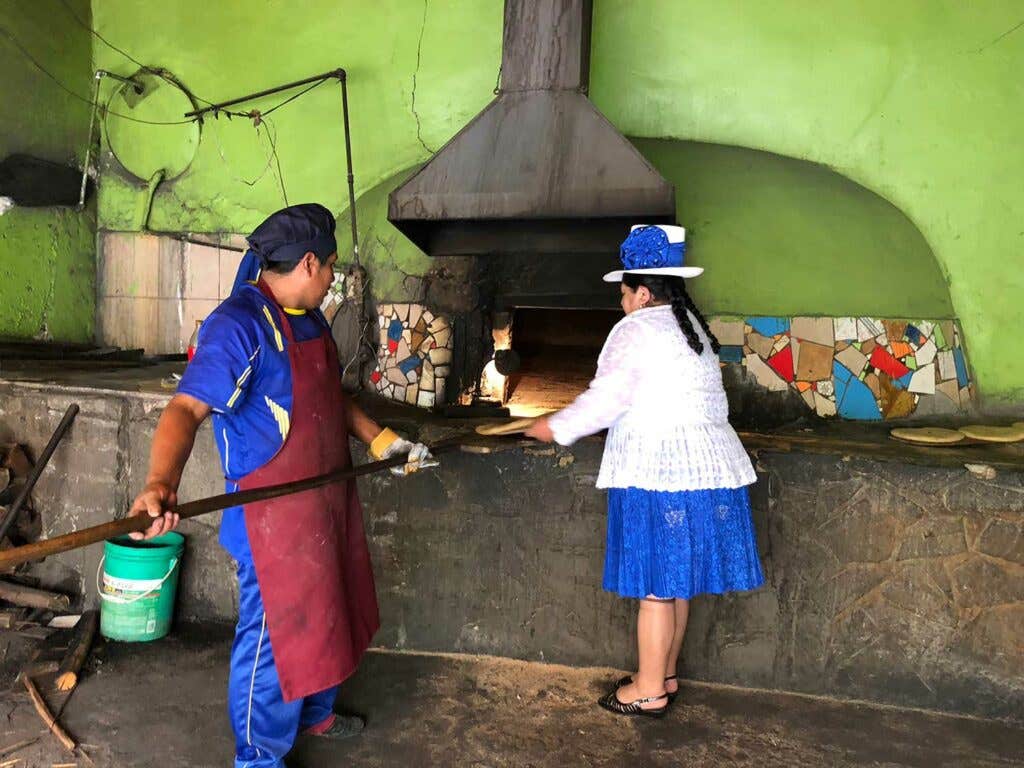
T’anta Wasi sits right in the middle of the main commercial drag, where wall-to-wall bakeries form a seductive carb corridor along the narrow highway that links Cusco to Lake Titicaca and Bolivia. A lot of hungry travelers pass through here, as do bands of itinerant sheep, even at this cockamamie hour. As I watched in general disbelief, drivers of tuk-tuks, big rigs, and every motor vehicle in between would pull over, cueing the sales team from the nearest open bakery to dart out—often across the highway—bags of pan chuta in hand.
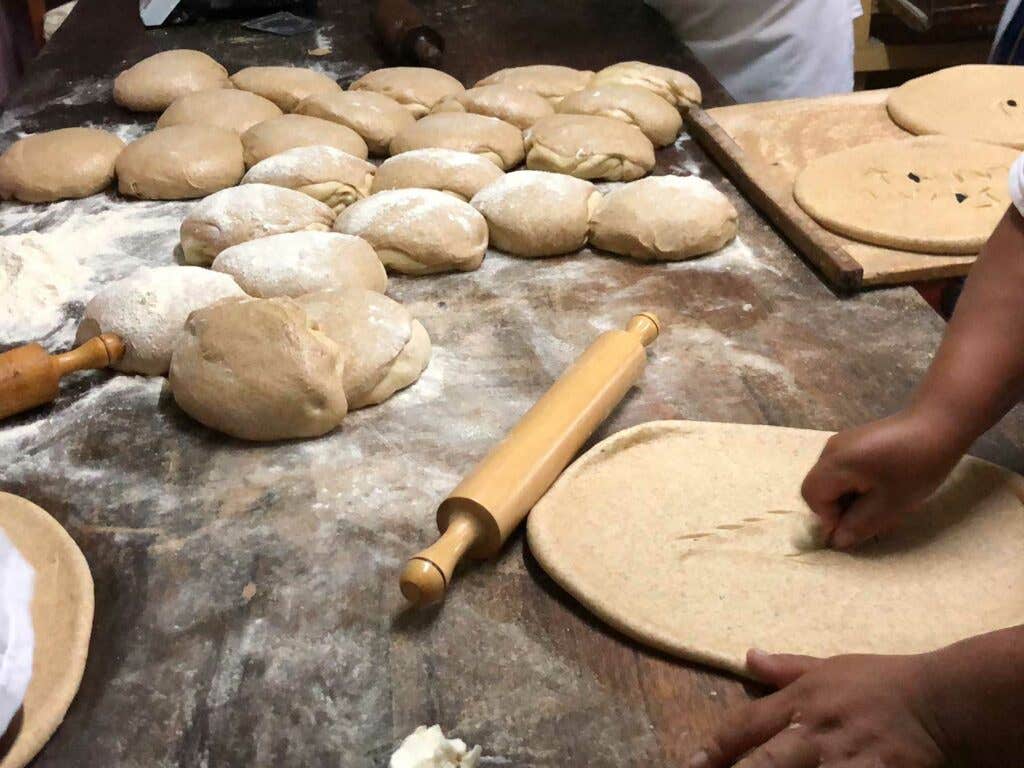
While I waited for the lady of the house, whose return from a weekend in Lima was rain-delayed, I happily accepted Delfin's invitation to the bakery's inner sanctum—all vats, troughs, and long wooden surfaces—where my demo (really, just a normal morning's worth of bread-making) would begin. As a remarkably speedy and coordinated team of five worked around me, I learned a number of lessons. For example, that pan chuta is believed to take its name from an old Quechua word for stretching or flattening. And that while all local bakers add their individual flourishes to their loaves, every pan chuta uses the same basic recipe: flour, salt, sugar, yeast, shortening, eggs, anise, cinnamon, vanilla and—the coup de grâce—glacial water from the nearby apu Pachatusan. (An apu is any sacred Andean peak that, despite centuries of imported Catholicism, remains a divinity to indigenous locals. Pachatusan is one such divinity, whose name means sustainer of the world.)
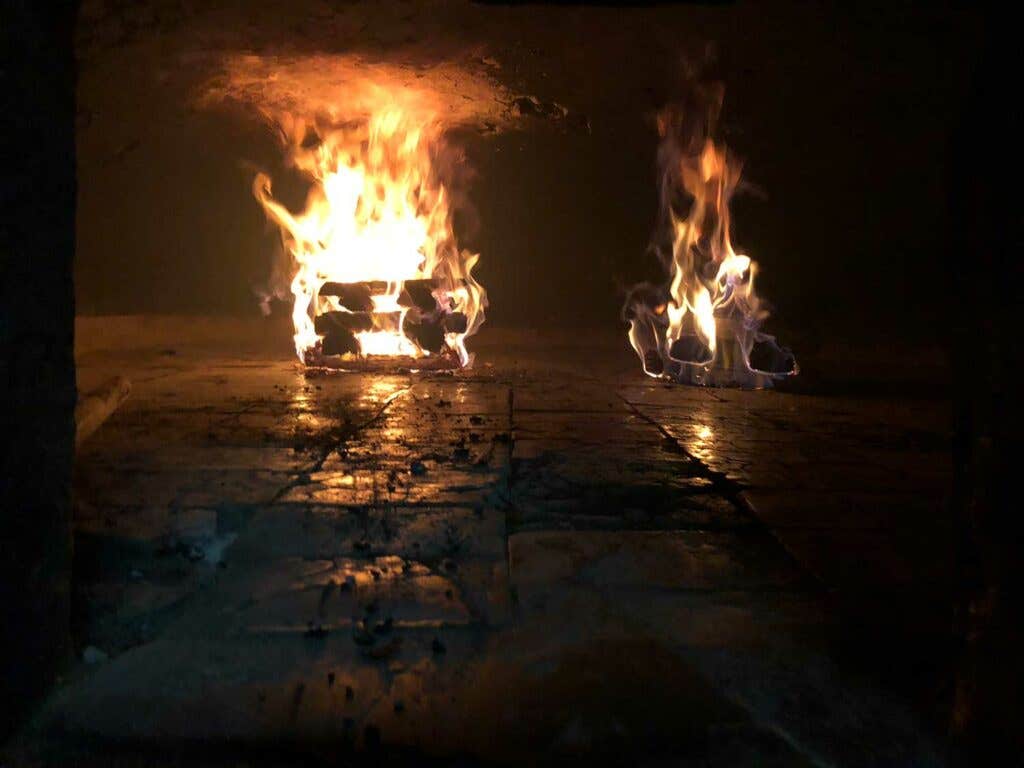
Though people have tried to replicate pan chuta throughout Peru—and have gone so far as to pre-clean their ovens with branches of wet eucalyptus leaves, as Oropesinos do for extra flavor—the taste is supposedly never the same without Pachatusan’s water and implied blessing. Delfin seeks the additional blessing of Pachamama (the Andean version of mother earth) daily as he’s firing up the oven, where he spills the first sip of whatever he’s drinking in deference to her.
There’s a whole metaphysical component to this bread that outsiders would need a doctorate in syncretic belief systems to understand. Possessed of no such degree, I questioned everyone I could, starting with Doña Modesta, who—having finally gotten back to Oropesa—emerged in all her azure-skirted glory at around 7 a.m.
As she gave me the owner’s tour of the joint, and paused with particular pride beneath the frescoed images of two locally venerated Virgenes, I took the opportunity to seek some clarification:
“So both Virgins are patron saints of Oropesa?”
“The Virgen Asunta is venerated on one side of town, the Virgen Reyna Estrella on the other, and the church of San Salvador sits in the middle.”
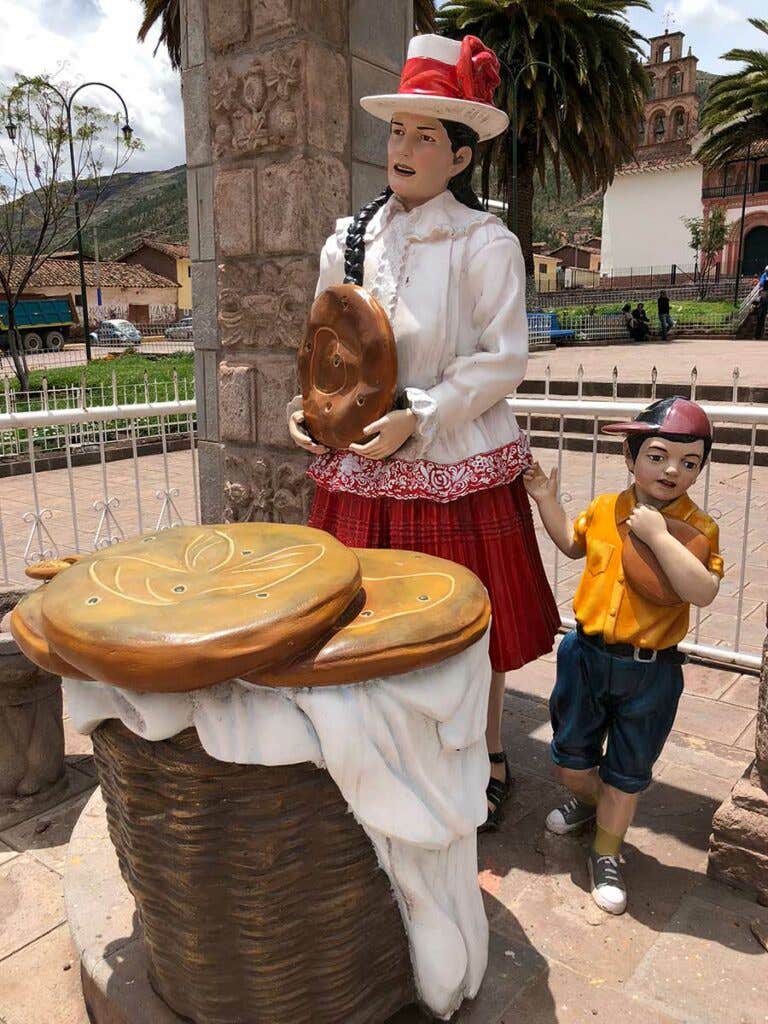
“And all of their blessings—plus the apu Pachatusan’s—are believed to filter into the local bread?”
“Yes,” she answered, adding—as if nothing could be simpler—that there was also the regionally venerated Virgen del Carmen to consider, plus Saint Francis of Assisi, to whom every baking family in Oropesa dedicates an altar, because at least here, he’s the patron saint of bakers.
In fact, I learned during a later conversation with Mario Samanez—onetime mayor of Oropesa—that when the statue of Saint Francis in the local church started to seem a bit puny for a patron saint, none other than the aforementioned shortening supplier bestowed a new and improved version upon the community. Samanez noted another venerated church statue: El Niño Panadero—a baby Jesus clutching some pan chuta in a nod to the local legend that he used to pose as a young bakery assistant and distribute bread to poor children, until one day he vanished, only to reappear in the Virgin Mary’s arms during a holiday procession.
Lest I start to feel I understood the extent of chuta symbology, another subsequent conversation disabused me of that notion. This time, I was speaking with the noted Cusqueño professor Alfredo Hinojosa, whom I’d sought out for his reported expertise in the history of the region—and who opened with no less than this: “To eat bread in Oropesa is to visit the soul of a Cusqueño.”
He went on to explain, among other things, that pan chuta is the Andean representation of the Host. And that if you look at things through a colonial-era indigenous lens, the chuta-as-Eucharist also represents—however indirectly—the desire for freedom from Spanish rule.
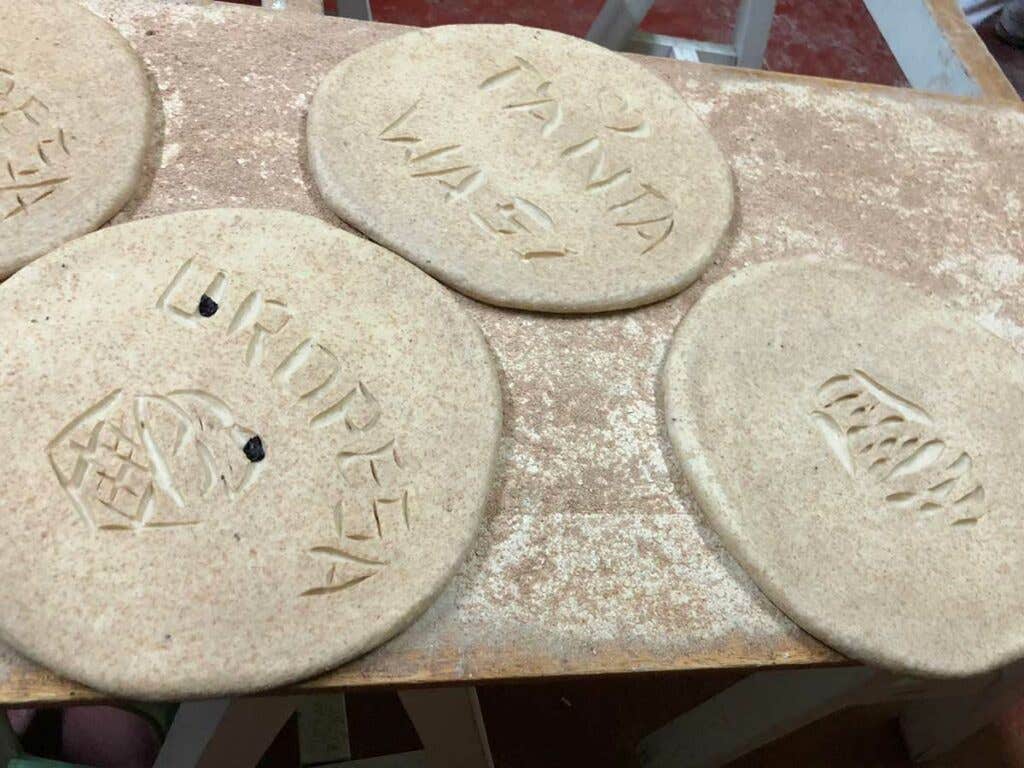
So when is a bread just a bread? Not yet.
Pan chuta is also a major token of affection here. “When we’re young and in love,” according to the former mayor, “we don’t have the habit of taking flowers to our girlfriends—we make special bread with a little more shortening or butter, and we take that as a gift to our beloved.” Another custom that continues to this day: “If you want to name someone a godparent, you offer three chutas,” Samanez explained.
How far back these traditions go, no one knows for sure. But what historians do know is that the arrival of Cusco’s first bull—imported by a Spanish viceroy who wanted to start cultivating wheat here—was such big news, local kids ditched school to catch a glimpse. Among the truants that day was none other than Garcilasco de la Vega, the famed chronicler of early colonial Peruvian life, who noted in his writings that he got spanked for the infraction, according to professor Hinojosa. And thus do we have a record of the 16th-century arrival of wheat cultivation to the area. As for that viceroy, he hailed from Oropesa, Spain—and named his newly acquired turf for his old stomping grounds in 1571.
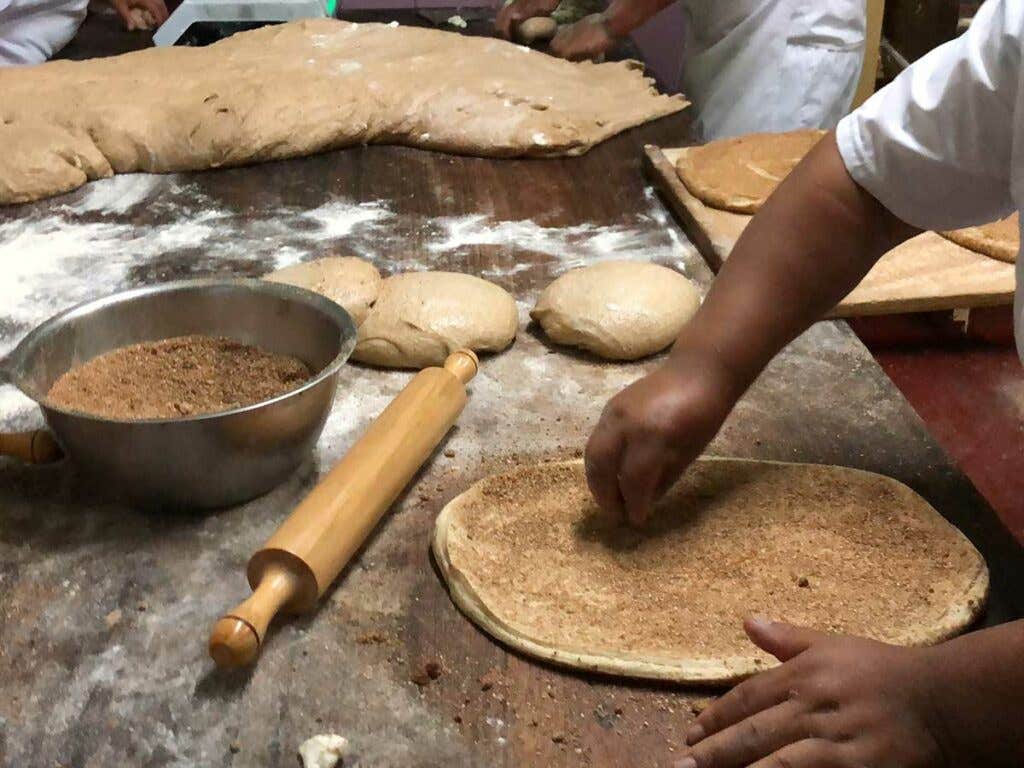
Over the next few centuries, Oropesa, Peru would grow to a town of 100 or so family-run ovens, dozens of bakeries and all manner of bread-themed events. “La Reina del Pan,” for one, is the local answer to the Miss American pageant, except that every contestant has the same talent. And that skill has such a far-reaching reputation in the bread-making world that Doña Modesta’s daughter, Liz—along with then-mayor Samanez—jointly represented Peru at Italy’s Gran Festa del Pane in 2009.
The proud mamá used her gallery-mounted photos of the occasion as the grand finale of our tour—and a life lesson: Keeping family tradition alive is everything, as generations’ worth of bakers in her family (and her husband’s) affirm.
As we exited the little photo gallery, we could see that the fab five—Delfin, Guillermo, Elvita, Olga and Veronica—were just wrapping up their last batch of chutas for the day. “Want to go decorate your own?” Doña Modesta offered. She didn’t have to ask me twice.
But when I got to the work space and picked up the decorating tool of choice—a Gillette Super Delgada razor blade with which the other women had been creating all manner of lovely motifs atop the day’s chutas—only one adornment came to mind. I slowly etched the word Gracias.
If you go:
You could simply turn up in Oropesa, improvise, and have a grand time. But because the local tourism scene is a work in progress, you may want to book an organized trip. For seriously knowledgeable guides, access to local luminaries and a hands-on bakery visit, one of your best bets is Abercrombie & Kent. The company puts together stellar itineraries throughout the country—not least, around Machu Picchu.
Keep Reading
Continue to Next Story









